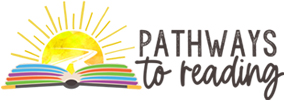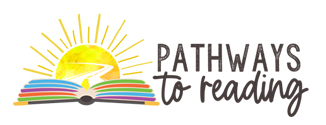Develop Your Students' Foundational Reading Skills
Phonemic Awareness, Phonics, Fluency, Vocabulary and Comprehension – Knowing and applying these five key components of the reading process is the single most significant factor in assisting students to learn to read. Teachers learn to apply their knowledge, identify individual needs and appropriately teach instructional strategies with PTR’s program.

Get Trained to Effectively Teach Reading
Teaching a student to read is “Rocket Science” as suggested by Louise Moats Teaching Reading is Rocket Science. Teachers are taught in Pathways 5 days of training not only the skills students need but an explicit systematic curriculum for grades K-2. By the end of second grade students are independent decoders and can then focus on subject specific comprehension and knowledge.

Please fill the form below
What Teachers Learn in PTR Training
- Instructional strategies
- Student self-correction model
- Multisensory instruction
- Reading fluency development
- Orthographic mapping
- Multisyllable level phonics
- Differentiated instruction
- How to measure phonics growth
- Phonemic awareness levels
- …and much more!
Effectively Assess and Teach
PTR employs two forms of assessment that drive student instruction. First, the assessment manual lists quarterly assessments given to all students to determine what skills each has learned and what skill development still needs attention. The assessments provide information for small group placement and instruction for the quarter.
Second, daily assessments for each student are recorded in the small group setting in the “small group lesson plan” document. As the title implies the lesson plan is outline daily instruction for each student in the small group. Specific needs of each student are identified and what instruction is appropriate. The daily assessments are recorded like a running record on this form located in the small group folder. Considerable time is spent in the 5-day training to ensure this knowledge and skill of the teacher is developed. Small group, differentiated instruction is the key component in Pathways instruction.

Teachers express confidence in their knowledge of the reading process.

Students demonstrate confidence and independence in spelling and reading.

Teachers are set on the path of appreciating the field of reading research.
Pathways in Action
Some 250 school districts in MO., KS., ID. and IA. currently use PTR as their Foundational Reading program. The success of teaching reading is the educator’s knowledge of the reading process (5 components). instructional strategies to teach reading and appropriate interpretation of quarterly and daily assessments so instruction is based on individual needs. Research and knowledge should drive instruction. References are available of teachers and district administration where PTR has made a difference in students learning to read.

Additional Details About Curriculum/Program
The understanding of the reading process as outlined in the Science of Reading concepts is the basis for the Pathways explicit and systematic curriculum K-2 and 3rd grade above. Pathways is aligned to the concepts of reading embedded in the Orton-Gillingham and Lindamood methods of teaching reading.
The heart and soul of PTR is the work done in small group instruction. Groups of students placed by assessment results, and teacher observed abilities and needs ensures Instruction is differentiated for each student. This key element requires trained teachers to apply research and knowledge to make the instruction appropriate for each individual student. Support is always available either through personal contact with a Pathways consultant or by viewing the over 150 videos with unlimited access after Yr. 1 five-day training.

